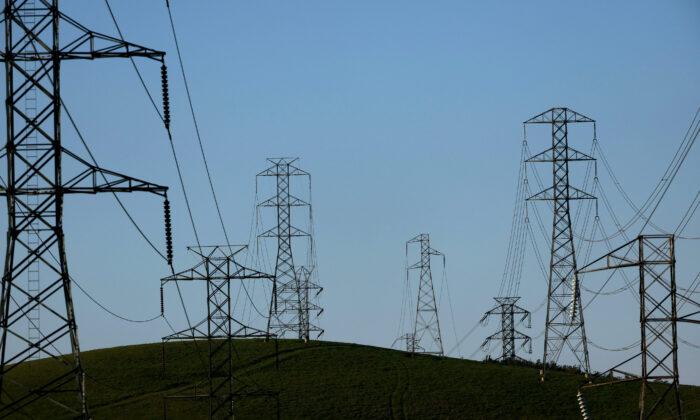California legislators are proposing measures to speed up the process of building new electrical transmission lines to help the state deliver renewable energy and meet its aggressive renewable energy goals.
The state Senate will be the first chamber to consider two bills—Senate Bill (SB) 420 and SB 619—aimed at streamlining the regulatory process of building the new power lines.
The state’s climate goals, spearheaded by Gov. Gavin Newsom, require the state to switch completely over to clean energy sources by 2045. Last year, the California Air Resources Board also passed a rule outlawing the sale of gas-powered cars by 2035.
Los Angeles adopted an even stricter goal of transitioning its power grid to green sources by 2035.
According to Padilla, these bold energy goals will require a larger and more resilient electrical grid. New high-voltage cables, modernized cable networks, and new infrastructure are needed to connect the state’s grid to larger-capacity lines, he said.

The California Public Utilities Commission has not approved a new transmission project in more than 10 years, according to Padilla. Much of that delay is caused by several regulatory hurdles.
Current transmission projects face nearly five years of delays and have cost overruns of millions of dollars, Padilla said in a release.
“Absent substantial changes to the state’s current planning and permitting processes, California will not meet its visionary climate goals and the state’s fragile energy grid will experience unprecedented strain,” Padilla said.
“This isn’t about cutting corners, it’s about streamlining the process and getting power where it needs to go in a reasonable timeframe,” concluded Becker. “We need to be able to get that power from the plant to the homes and businesses that need it, because having a clean power plant ready to go but just sitting there idling doesn’t benefit anyone.”

California’s power grid is more than 100 years old and needs to be updated, Becker said. SB 420 will be heard in the Senate Environmental Quality Committee March 29.
The CAISO estimated the state will need 4,000 megawatts of new capacity every year. The increased need is driven by the state’s decarbonization goals, expected electrification of transportation, concerns about access to out-of-state renewable energy sources, greater need for energy during nighttime hours when solar is unavailable, and the need to maintain energy after the state’s last nuclear plant at Diablo Canyon is retired, the agency reported.
“This transformation will not only drive significant investment in a technologically and geographically diverse fleet of resources, including storage, but also significant transmission to accommodate all the new capacity being added,” CAISO said in its 20-Year Transmission Outlook. “The transmission needs will range from high-voltage lines that traverse significant distances to access out-of-state resources, as well as major generation pockets, including offshore wind and geothermal resources located inside the state.”





